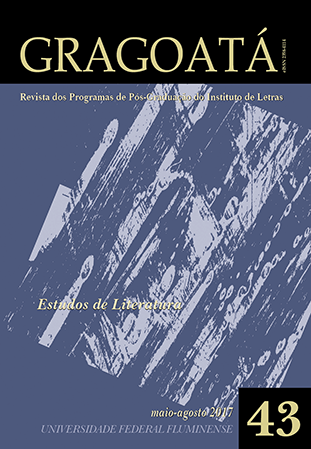“Witty device”: the emblem and its appropriation in Shakespeare’s drama
DOI:
https://doi.org/10.22409/gragoata.2017n43a33495Keywords:
Emblem. Poetics. Rhetoric. Shakespeare. Elizabethan drama.Abstract
The renowned book of emblems written by Andrea Alciati, Emblematum liber (1531), the first of its kind to group together a wood engraving, a motto and an epigram, was widely emulated in the European courts throughout the 16th and 17th centuries. The first emblem book in English, A Choice of Emblemes and Other Devises, by Geoffrey Whitney, was published in 1586, and was extensively read in the learned circle of its time. In his work, Whitney displays 248 emblems made up of a motto, a wood engraving, and a poem, in English. Recycling ancient topoi in the manner of Alciati, Whitney’s emblems represent witty commonplaces, giving new life to ancient practices guided by Horace’s notion of ut pictura poesis and rhetorical-poetical precepts. Focusing on Whitney’s emblem book, this essay intends to analyze the structure and function of the emblem, highlighting the specificity of its iconic and verbal nature, and to discuss, from a selected corpus, some aspects of Shakespeare’s appropriation of the emblematic genre.
---
DOI: http://dx.doi.org/10.22409/gragoata.2017n43a767.
Downloads
Downloads
Published
How to Cite
Issue
Section
License
Authors who publish in Gragoatá agree to the following terms:
The authors retain the rights and give the journal the right to the first publication, simultaneously subject to a Creative Commons license CC-BY-NC 4.0, which allows sharing by third parties with due mention to the author and the first publication by Gragoatá.
Authors may enter into additional and separate contractual arrangements for the non-exclusive distribution of the published version of the work (for example, posting it in an institutional repository or publishing it in a book), with recognition of its initial publication in Gragoatá.

Gragoatá is licensed under a Creative Commons - Attribution-NonCommercial 4.0 International.











